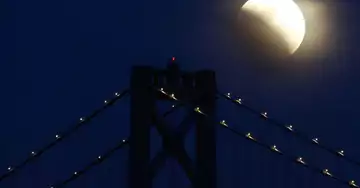A snapshot of the Terra blockchain is expected to take place later this week ahead of the launch of "Terra 2.0," a so-called revival of the Terra ecosystem following the terraUSD (UST) implosion earlier this month.
Investors who owned more than 10,000 luna before the UST implosion will receive the new tokens at regular intervals to prevent an immediate sale. More than 30% of their tokens would be initially unlocked, and the remaining 70% would be released and unlocked over two years. New tokens would be distributed to these holders after six months.
Holders of wallets with more than 1 million luna or UST before the elimination of UST would have to wait more than a year before receiving tokens, with a four-year lockout period thereafter, according to the revival plan.
A snapshot - that is, a record of the state of a blockchain at a given point in time - will allow Terra to send the newly issued LUNA tokens to the holders of the old LUNA. This would theoretically allow the old holders to recover some of their lost investment value while incentivizing them to use the new blockchain.
The snapshot for Terra 2.0 is expected on May 26. "Going by block times, the post-snapshot block, 7,790,000, could happen as early as May 26, 2022, 16:20:00 UTC," Terra developers said in a post Tuesday.
"The supply at Genesis is significantly lower than anyone expected, closer to 116.7M and rising to 182M after 1 year," they added, addressing community concerns about a highly inflated Luna supply.
How did the snapshot plan come about?
In early May, UST lost its peg to the U.S. dollar and fell as low as 7 cents in the weeks that followed, leading to a 99.7% drop in the price of related Luna tokens (LUNA) and over $28 billion in outflows from Terra-based decentralized financial apps (DeFi).
This led to a drop in sentiment among LUNA investors and traders, and apparently even sparked public outrage in Korea, where Terra had a large community, and some crypto funds saw billions of dollars in losses.
Terra's often brusque founder, Do Kwon, proposed a revitalization plan in the days afterward that includes a "fork" of the blockchain and an "airdrop" for holders affected by the UST implosion.
The plan seeks to reunite the community and restore its trust in the Terra ecosystem.
A "fork" of a blockchain refers to the creation of a new blockchain in which the data from the old blockchain is prepended to the data from the newer blockchain. However, Terra developers have stated that "Terra 2.0" will be an entirely new project, meaning that no data will be transferred from the current chain to the new one.
The revival plan, despite being approved by Terra's network validators, went live despite the results of a preliminary online survey about the hard fork plan finding minimal support among community members.
About 92% of more than 6,220 voters in a previously conducted online poll voted against the change, with the most popular responses calling for "no spinoff," according to reports.
LUNA prices have risen over 6.2% in the last 24 hours.

